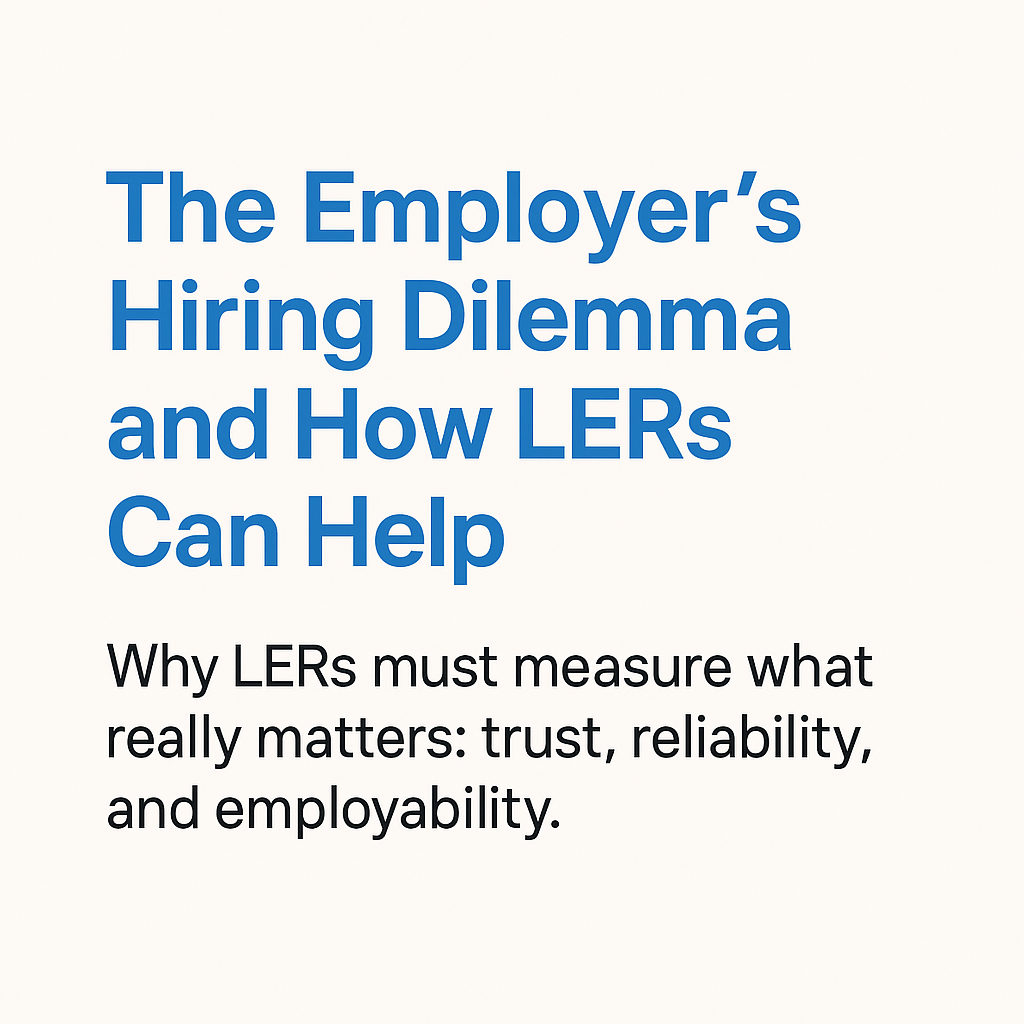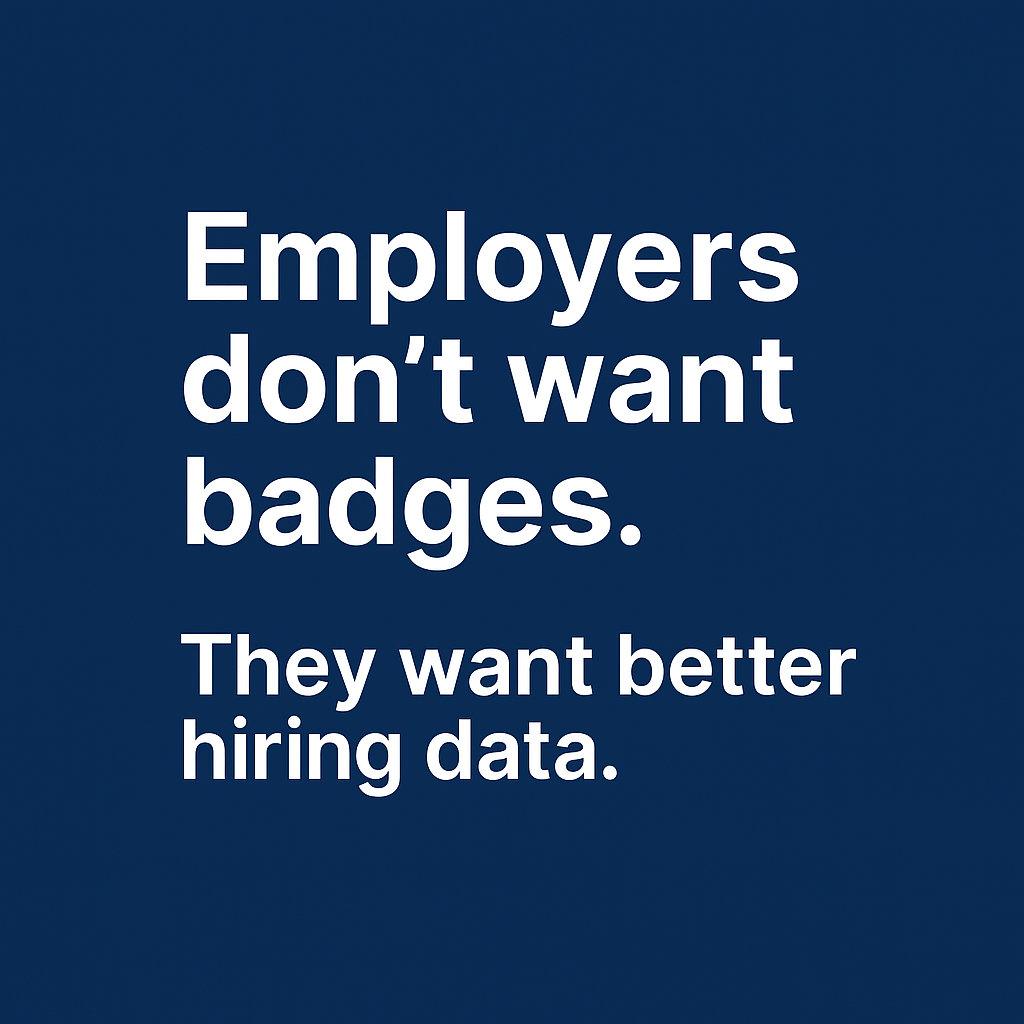First in a series of “SmartResume Summer Reads” on the impact of GenAI on the job talent ecosystem and the promise of Learning and Employment Records (LERs) to improve a broken system
The first critical infrastructure to be crippled by unchecked #GenAI is not going to be an electrical grid or defense system or financial market. The first to be crippled by artificial intelligence will be the applicant tracking systems (#ATS) that process and rank job talent for the largest employers in America.
For years, large employers have employed #AI to sort and rank job applicants in less than transparent ways. This has led to growing frustration and dissatisfaction among job seekers as many question whether a human being is reviewing their application or whether it is entering some type of resume black hole. The employers probably never predicted a world where millions of job seekers would turn around and begin to leverage GenAI themselves in their own job applications. But that is where we are today. Employers are beginning to get overwhelmed with “perfect looking” Gen-Ai powered resumes that make extreme multiples of applicants all look like a great fit for the position.
I believe that an AI-fueled job talent reckoning has already begun.
How GenAI is Misused by Job Seekers
Generative AI, designed to assist with content creation, can analyze job descriptions and produce convincing resumes that highlight the exact skills and experiences sought by employers. Job seekers can input a job description and/or their resume into a GenAI tool, which then generates a new resume that seemingly matches the requirements perfectly, even if the candidate lacks the relevant skills or experience.
How big is the problem? In a recent study by StandOut CV, 73% of job seekers polled said they would consider using AI to embellish or lie on their resume. That’s almost three quarters of all respondents and those were just the ones that were willing to admit it! Imagine what the real number might be.
The Implications for Employers
- Wasted Resources: Hiring managers and HR departments may spend considerable time and resources interviewing candidates who, despite having impressive resumes, do not possess the skills required for the job.
- Missed Talent: Qualified candidates who don’t use AI on their resumes will be missed in a sea of inflated resumes.
- Workplace Inefficiency: Hiring an unqualified candidate based on a fabricated resume can lead to decreased productivity and efficiency, as these individuals may struggle to meet the job’s demands.
- Increased Turnover: Employees who cannot perform as expected may lead to higher turnover rates, resulting in additional recruitment costs and a continuous cycle of hiring.
- Damaged Reputation: Companies known for hiring unqualified staff may suffer reputational damage, impacting their ability to attract top talent.
I was speaking with the VP of Product Management for a well-known Ed-Tech company recently and he said that they received over 6,000 applications for a single product manager position. It was clear that many of the resumes submitted looked similar because they were created based on the hiring criteria of the open job position instead of that job seeker’s background.
One thing is clear. There is no going back and employers cannot throw more AI at this problem and expect a better solution. Of course, I asked @ChatGPT how to solve this problem and it suggested employers should use more AI as one of its top two recommendations. Basically, a strategy of mutual assured destruction but on the job talent front instead of arms race.
The Promise of Learning and Employment Records (#LER)
So, if neither employers or job seekers are willing to roll back their use of AI then what are some potential alternatives to help improve the situation for both job seekers and employers?
I believe the solution consists of two parts- a next generation resume platform that leverages verifiable data for job seekers and verified skills talent marketplace technology for employers. The next gen resume platform should still allow job seekers to use GenAI to help polish sections of their resume based on inputs about their skills, experience, qualifications, and interests. But instead of leveraging the job description to reverse engineer qualifications, AI should lean on digitally verifiable Learning and Employment Records from trusted third parties to help them generate their resume. For the employers, they need to be able to post skills first job descriptions that value verified skills and soon be able to ingest the rich metadata included in the LERs and apply it to their applicant tracking system ruleset. Oh, and someone needs to create an independent trust registry quickly. One that can give employers confidence that the verifiable credentials present on the LERs are vouched for by a reputable organization.
Our @SmartResume team is proud to partner with @Arizona State University on what we believe to be the first pilot in the country to try to solve this growing problem. As part of the @SkillsFWD initiative, Arizona State University will be encouraging students to create a SmartResume that includes both GenAI functionality and verifiable credentials. I like to think of the digital credentials as “trust anchors” and every SmartResume has at least one present.
In addition to providing a next generation resume builder for their students, ASU will also be partnering with SmartResume to create a skill first hiring marketplace where they can hire their own students for employment.
For a deep dive on the challenges that the ASU Enterprise Technology department has seen related to students increasingly using GenAI to apply to campus jobs and what they hope to accomplish with SmartResume, I encourage you to check out our next article penned by our Chief Growth Officer, Ian Davidson. Ian interviews Dr. Megan Workmon Larsen, the Director of Learning Experience Design at ASU Enterprise Technology, and she will share the firsthand impact that her division has seen from students that have increasingly used GenAI to apply for jobs on campus. Dr. Larsen and Ian will also be sharing the stage at the upcoming Digital Badge Summit in Boulder, Colorado where they will share more details on our SkillsFWD collaboration. Sign up for the Digital Badge Summit if you haven’t already!










